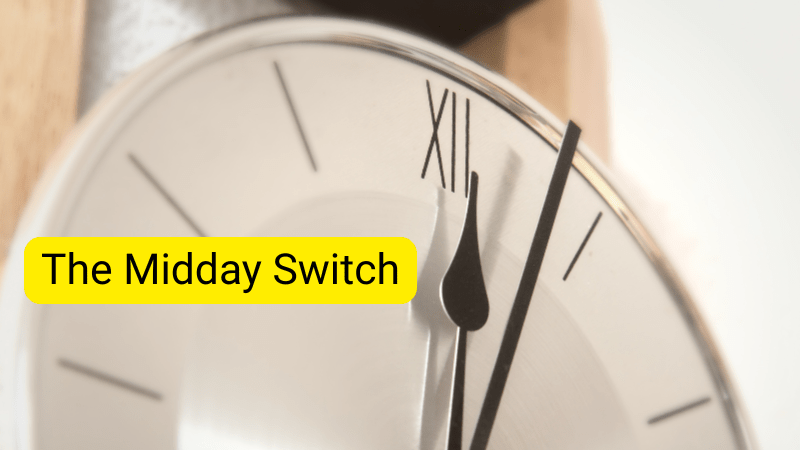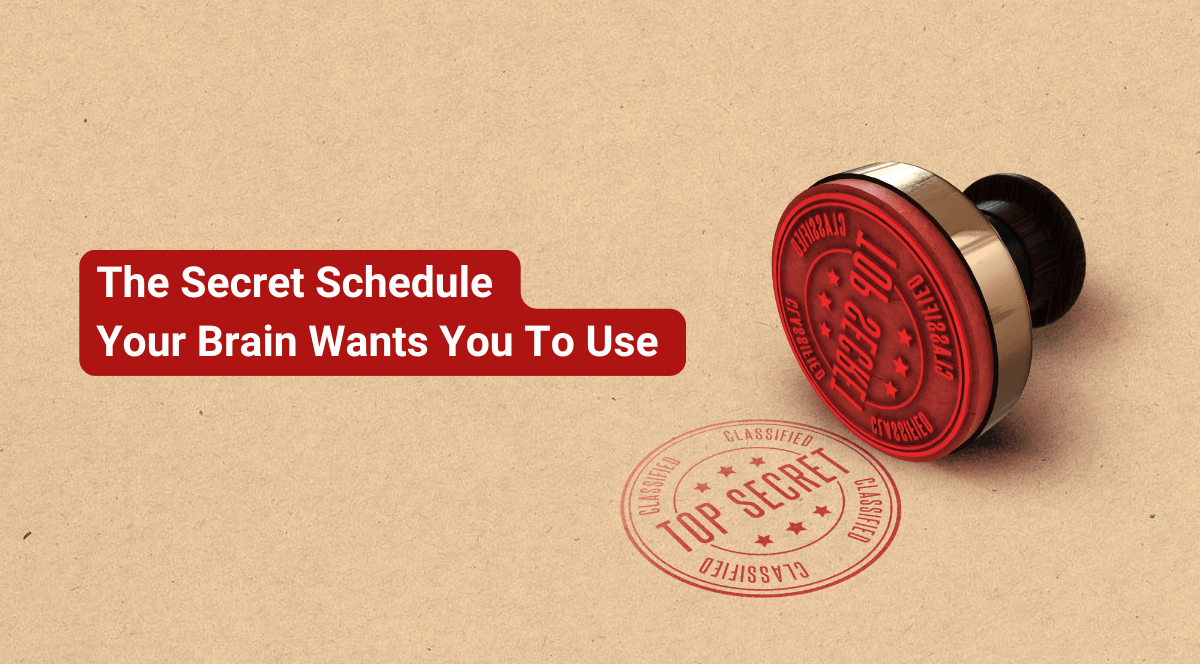Introduction
Ever wonder why you’re unstoppable at 7AM but useless by lunch? Or why your best ideas hit at night while you’re brushing your teeth?
It’s not random. Your brain is running on a precise schedule – one that could transform your entire workday if you knew how to read it, if you knew about time selection.
Most people fight against their natural rhythm, forcing themselves to tackle complex tasks at exactly the wrong time. But hidden in your daily ups and downs is a performance code that’s been quietly controlling your productivity. And once you crack it, you’ll never look at your to-do list the same way again.
Key Takeaways
- Time selection means matching tasks to your brain’s natural energy peaks and dips.
- Most people have peak focus in the morning, a midday slump, and a creative boost in the afternoon or evening.
- Tracking your energy, mood, and focus helps identify your personal productivity schedule.
- Aligning work with your best times improves results and reduces fatigue.
- Small adjustments using time selection principles can boost performance.
Time Selection: Why it Matters
Have you ever noticed that some hours of your day are better than others? Maybe you crush your workout at 6 AM but can’t lift half as much at noon. Or perhaps you write brilliant emails after lunch but struggle to form sentences before coffee.
This is no accident. Your body and brain have natural rhythms that affect how well you can perform different tasks.
We call this “time selection,” and it might be the easiest productivity hack you’ll ever use.
Why Time Matters
Your energy isn’t the same all day long. It rises and falls in a pattern that’s unique to you. Some people bounce out of bed ready to tackle tough tasks. Others don’t hit their stride until afternoon.
Your mood follows patterns too. Most of us feel more positive at certain times of day. When you’re in a good mood, creative work flows better.
Interruptions also follow patterns. The office is noisy at 10 AM but quiet at 8 AM. Your kids need help with homework at 7 PM but are at school at 2 PM.
Matching tasks to your best times can boost your results dramatically.
Morning Magic
For many people, mornings offer peak focus and willpower. Your mind is fresh after rest. Distractions haven’t piled up yet.
This makes morning perfect for your hardest work. Tasks that need deep thinking do well here. Problem-solving and planning benefit from morning clarity.
Save this time for work that requires your full brain power. Don’t waste it on emails or small talk if you can help it.
Morning is also ideal for habits you want to lock in. Exercise, meditation, or learning new skills stick better when done early.
The Midday Switch
Around lunch, most people experience an energy dip. This is normal and tied to your body’s natural rhythm. Fighting this dip rarely works well.
Instead, use this time for easier tasks. Schedule meetings, answer emails, or handle routine work now. Save your brain the struggle of focusing when it naturally wants to rest.
Some people find a short nap helps reset their energy. Others use light movement or fresh air to push through the slump.
Either way, don’t plan your most important work for this time.

Afternoon Revival
Many experience a second wind in mid-afternoon. This energy boost is different from morning energy. It often brings more creativity and less rigid thinking.
This makes afternoon great for brainstorming, creative projects, and collaborative work. Your mind makes new connections more easily now.
Late afternoon can also work well for reviewing work you created earlier. You’ll spot errors you missed when you were deep in the creation process.
Evening Possibilities
Contrary to popular belief, evenings aren’t always low-energy times. For some people, they’re actually peak productivity hours. Night owls often do their best work after the sun sets.
Even if you’re not a night owl, evening has advantages. There are usually fewer interruptions. The day’s urgent matters have been handled. This creates space for deeper thought.
Evening can be perfect for reflection, planning, and creative work. Your mind may wander more freely, leading to unexpected insights.
Finding Your Perfect Times
Everyone’s energy pattern is different. To find yours, track your energy, mood, and focus for a week. Note when you feel most alert, creative, or tired.
Ask yourself these questions throughout the day:
- How easily can I concentrate right now?
- How quickly am I completing tasks?
- How creative do my solutions feel?
- How positive is my mood?
Look for patterns in your answers. These reveal your personal energy map.
Building Your Time-Based Schedule
Once you know your patterns, match tasks to your energy levels:
- High-focus work goes in your peak alert times
- Creative work goes in your most positive mood times
- Routine tasks go in your lower energy periods
- Important meetings go when you’re most articulate
- Learning goes when your memory works best
Block these times on your calendar if possible. Treat them as appointments with yourself.
Let others know about your time blocks too. When people understand you’re matching tasks to energy, they’ll usually respect your system.
When You Can’t Choose Your Time
Sometimes you can’t control when things happen. That’s reality. But you can still use time selection principles:
- Adjust your environment to boost your energy when needed
- Use quick exercises or breathing techniques to improve focus
- Shift your mindset to match the task at hand
- Prepare in advance during your good times for tasks you’ll face in your low times
Every bit of alignment helps, even when perfect timing isn’t possible.
FAQ’s
Q. What is time selection and why does it matter?
A. Time selection is the practice of aligning your tasks with your brain’s natural energy and focus cycles. It matters because working with your natural rhythms boosts productivity, creativity, and well-being.
Q. How do I find my personal peak times for different tasks?
A. Track your energy, mood, and focus throughout the day for a week. Note when you feel most alert, creative, or tired. Patterns will reveal your best times for different types of work.
Q. What if my job doesn’t allow flexible scheduling?
A. Even if you can’t fully control your schedule, you can use time selection principles by making small adjustments-like preparing in advance during high-energy periods, using quick focus techniques, or adjusting your environment to support your needs.
Final Thoughts
People who match tasks to their best times report finishing work faster. They make fewer mistakes. They enjoy their work more too.
The quality of your output improves when you work with your natural rhythms. Ideas flow more easily. Solutions come more quickly. Your stamina lasts longer.
Best of all, you feel less drained at day’s end. Working with your energy instead of against it saves your resources for what matters most.
Time selection turns the clock from enemy to ally. It’s not about squeezing more into each day. It’s about getting more from the time you already have.
Try it for a week. You might be amazed at how much difference an hour can make when it’s the right hour.
Speak soon
- Standard Operating Procedures: Your Ultimate Guide to Streamlining Business Efficiency - September 5, 2025
- Brutal Truth: Your Customer Perception Is Sabotaging Your Success (Here’s The Proof) - July 25, 2025
- The Counter-Intuitive Customer-Centric Culture Strategy That Changes Everything - July 11, 2025

